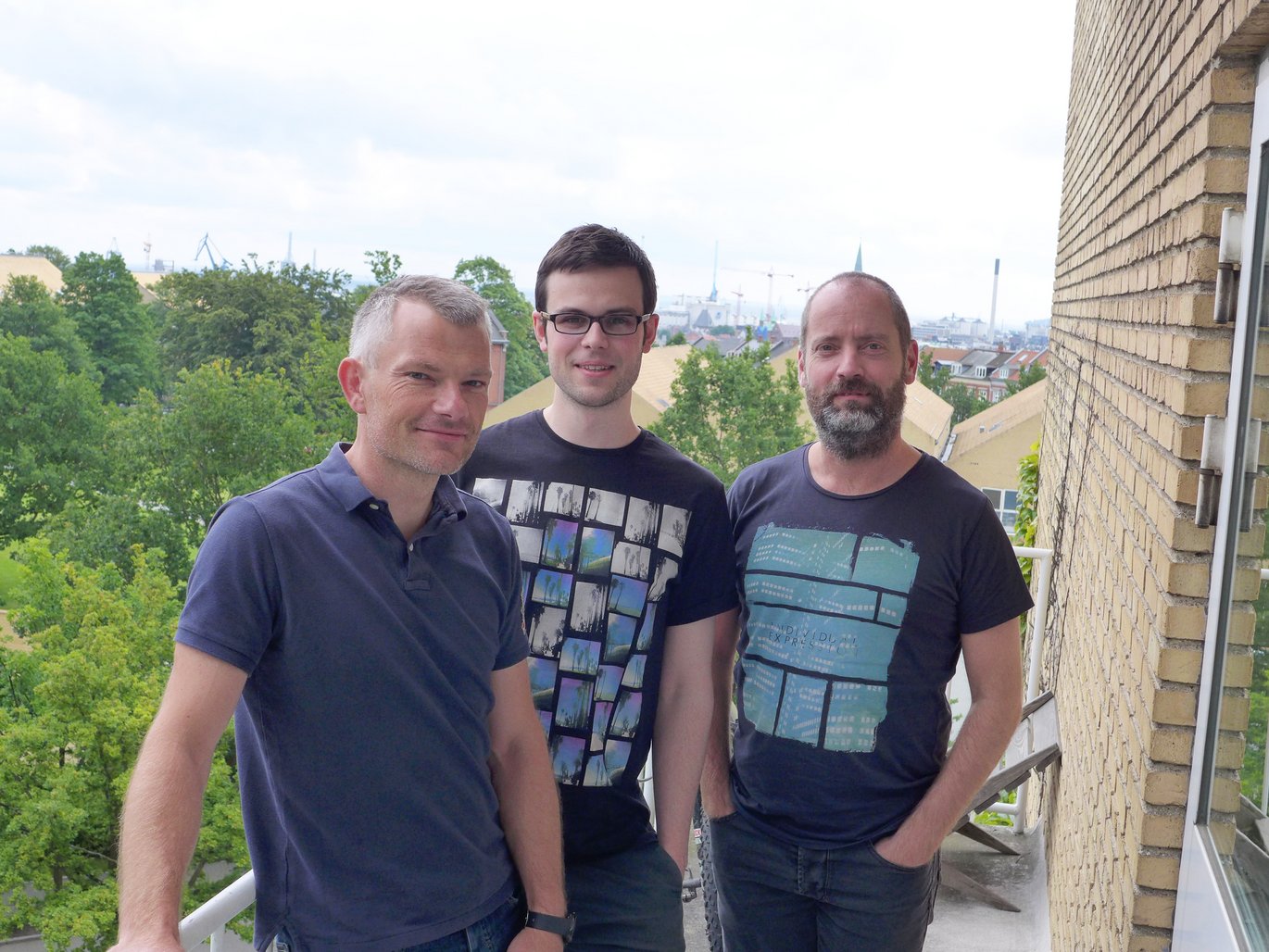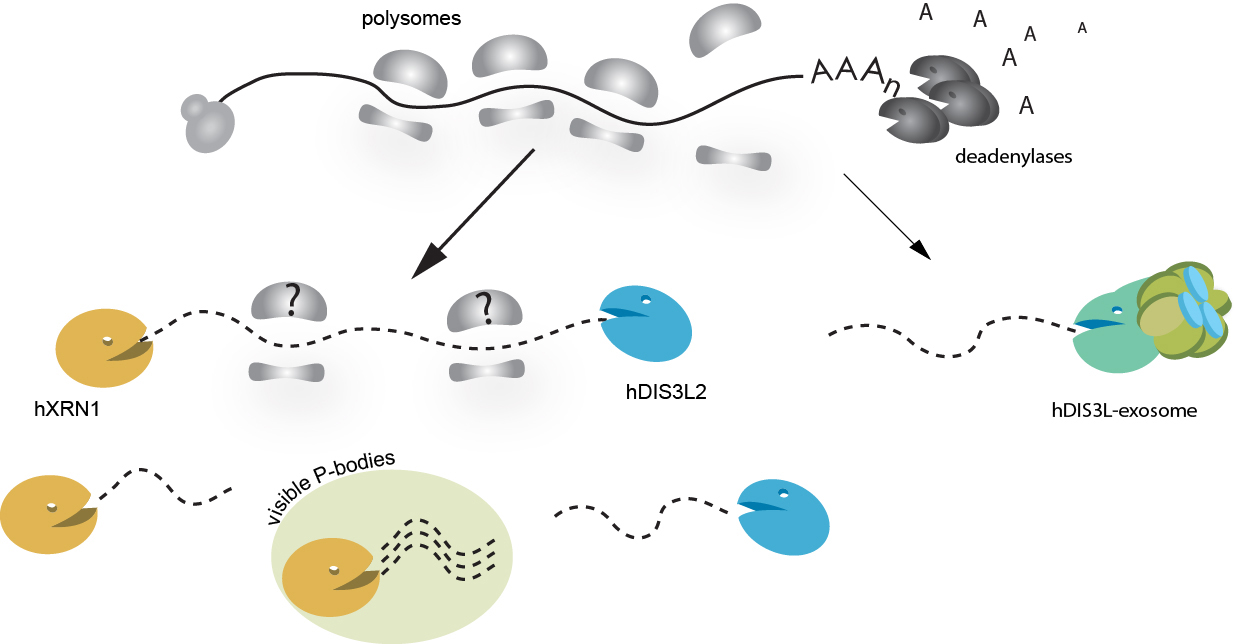Identification of a novel mRNA degradation pathway in humans
Researchers from Denmark and Poland have uncovered a novel molecular pathway, which regulates gene expression in the cytoplasm of human cells. The finding has implications for the human diseases; the Perlman syndrome of overgrowth and Wilms' tumor development.


RNA synthesis and degradation are key steps in the regulation of gene expression in all living organisms. RNA molecules are degraded by exoribonucleases degrading from the 3’- or 5’-ends and endoribonucleases cleaving substrates internally. While the majority of nuclear RNA degradation derives from the 3’-5’ exoribonucleolytic activities of the so-called RNA exosome complex, relatively little is known about such RNA degradation in the cytoplasm of higher eukaryotes.
Previously, the Danish and Polish researchers from Aarhus and Warsaw had disclosed that human cells harbour two compartment-specific exosome-associated homologs of bacterial RNase II/R domain proteins and the yeast Dis3p exoribonuclease: the nuclear hDIS3 and the cytoplasmic hDIS3L enzymes.
Interestingly, in the present study, postdoctoral researcher Michal Lubas has uncovered a third evolutionarily conserved homolog of the yeast Dis3 exoribonuclease – hDIS3L2 - which serves as a cytoplasmic exoribonuclease and whose mutation has been implicated in genetic diseases and cancer.
In the present study, published in the EMBO Journal, Michal Lubas was able to show that hDIS3L2 functions in the 3’-5’ degradation of human cytoplasmic mRNA and that this occurs in an exosome-independent manner. In vivo, the depletion of hDIS3L2 impacts cytoplasmic RNA metabolism as revealed by low- and high-throughput analysis of multiple mRNAs.
The importance of hDIS3L2 was recently reflected by independent studies describing an association of the hDIS3L2 gene with the Perlman syndrome of overgrowth and Wilms' tumor susceptibility. The current study may therefore help our understanding of how alterations in mRNA decay contribute to cancer.
The research project was carried out by Postdoctoral Fellow Michal Lubas in the context of the ‘Centre for mRNP Biogenesis and Metabolism’ in the laboratory of Torben Heick Jensen together with Associate Professor Christian Damgaard at the Department of Molecular Biology and Genetics, Aarhus University, Denmark, as well as with collaborators Dr. Rafal Tomecki and Dr. Dominik Cysewski from Associate Professor Andrzej Dziembowski’s laboratory from the Institute of Biophysics and Biochemistry (PAS), Warsaw University, Poland.
Link to the research article in the EMBO Journal: Exonuclease hDIS3L2 specifies an exosome-independent 3?-5? degradation pathway of human cytoplasmic mRNA
Link to 'Have you seen' about the article
Further information
Professor Torben Heick Jensen
Department of Molecular Biology and Genetics
Aarhus University, Denmark
thj@mb.au.dk - +45 6020 2705
